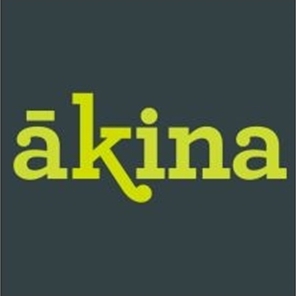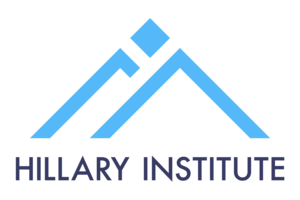UPDATE: Bollard not expected to hike rates until mid-2011
UPDATE: Bollard not expected to hike rates until mid-2011
By Paul McBeth
Dec. 9 (BusinessDesk) – Reserve Bank Governor Alan Bollard isn’t expected to start hiking interest rates again until the middle of next year after he held the official cash rate at 3% today. The kiwi dollar fell after the statement.
Bollard pushed out the timetable for his return to tighter monetary policy, saying it was “prudent to keep the OCR low until the recovery becomes more robust” as the country’s economic recovery stagnates amid soft consumer spending and a depressed housing market. That has analysts pushing out their forecasts for when Bollard will go again, scotching the likelihood of a March hike.
“The pre-emptive rate hikes earlier this year, have in hindsight looked unnecessary,” said Jane Turner, economist at ASB. “The RBNZ now wants to be more confident that the recovery is firmly underway and that inflation pressures are actually lifting.”
Bollard began tightening monetary policy in June after taking the benchmark interest rate to a record-low 2.5% to combat the worst recession in almost two decades against the backdrop of the global financial crisis.
The bank today pared its forecast for the 90-day bank bill, having already shaved more than a percentage point from projections in the second half of 2011 in the previous statement, and is predicting it will stay sub 4% until the June quarter in 2012.
Imre Speizer, market strategist Westpac Banking Corp., said the outcome was more dovish than the market was expecting, and he’s picking Bollard will lift rates in July.
“The shift in stance is best illustrated by the 90-day bank bill rate projections which were revised around 30bp lower out to March 2013,” he said.
The statement knocked about half a U.S. cent off the kiwi dollar, with Bollard again complaining about the strength of New Zealand’s currency. The kiwi recently traded at 74.56 cents from 74.94 cents immediately before the statement, and was at 67.54 on the TWI from 67.84.
“Sustained strength in the currency is inhibiting the rebalancing of economic activity towards the tradable sector,” he said.
The bank raised its forecast for the trade-weighted index of major trading partners’ currencies by almost 5% over the next two years.
Bollard said an improved savings rate and faster action by the government to cut its fiscal deficit would ease pressure on interest rates and the currency.
The government could improve national savings by cutting spending, which would have a bigger impact on rebalancing the economy by reining in its deficit, which shot out by 7 percentage points since 2008.
“Changing private sector savings behaviour is a slow process, whereas changing public sector savings can be made in the shorter term as an explicit policy choice,” the statement said. Some of the deterioration was due to the economy’s slowdown, but much of it “appears more structural, and will persist even as the effects of the recession fade.”
Today’s pause mirrors the Australian and Canadian central banks, which also held their benchmark rates this week, as the global economy remains shaky amid heightened concerns over European sovereign debt and America’s ability to revive its sagging recovery.
Bollard said the economic recovery in the U.S. and the U.K. was “a little stronger” than predicted, though New Zealand still faces “downside risks to global growth and export prices.”
The bank reined in forecast growth for New Zealand’s economy in the near term, saying the 7.1 magnitude Canterbury earthquake was estimated to have cut growth by 0.1 percentage points in the September quarter. The RBNZ lifted its projected cost of the quake to $5 billion, adding another billion dollars to the residential property bill. The bank slashed its forecast growth in the September quarter to 0.3% from 0.8% in its last statement.
Still, earthquake repairs and high export prices are expected to lift gross domestic product through the latter half of next year, with quarterly growth peaking at 1.4% in the September quarter.
Construction and manufacturing are still struggling to fire, with soft data released yesterday raising the prospect of an economic contraction in the third quarter. That feeds into the general malaise in the economy, though strong commodity prices have helped alleviate some of the pessimism.
Bollard said the slow pick-up in GDP will gradually lead to an increase in underlying inflation. The recent spike in the headline consumer price index from the government’s hike in consumption tax wasn’t impacting on how businesses were setting prices or negotiating wages, he said. Though the GST increase pushes the CPI beyond the bank’s target band of between 1% and 3%, Bollard can ignore short-term fluctuations.
The bank lifted its forecast for annual inflation rates over the next three quarters by 0.2 percentage points from its September statement, though the track is expected to be slower in later periods.
(BusinessDesk)


 Hugh Grant: Lessons From Australia - How Digital Tools Could Support NZ Nurses In Palliative Care
Hugh Grant: Lessons From Australia - How Digital Tools Could Support NZ Nurses In Palliative Care Canterbury Museum: Dinosaur Dolphins Survived In New Zealand Long After Extinction Elsewhere
Canterbury Museum: Dinosaur Dolphins Survived In New Zealand Long After Extinction Elsewhere Retail NZ: Retailers Still Under Pressure At End Of 2024
Retail NZ: Retailers Still Under Pressure At End Of 2024  University of Canterbury: Research Sheds Light On Fire Risk For Canterbury
University of Canterbury: Research Sheds Light On Fire Risk For Canterbury GE Free NZ: Potential $20 Billion Loss In Export Demand Threatens Rural Communities
GE Free NZ: Potential $20 Billion Loss In Export Demand Threatens Rural Communities Science Media Centre: Carbon-storing Construction Materials – Expert Reaction
Science Media Centre: Carbon-storing Construction Materials – Expert Reaction



